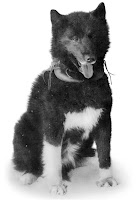When you watch a team go out of the starting chute at a race it usually looks pretty simple and goes off without a hitch. How does the transformation from the chaotic scene in the staging area become a safe race and how does it stay that way? It all begins with the International Sled Dog Racing Association (ISDRA) Race Rules.
Race rules promoting animal welfare are nothing new to sled dog racing. Since the first major organized race in 1909 (the All Alaska Sweepstakes in Nome Alaska), rules have been implemented to safeguard dogs and mushers alike. For the past 30 years, ISDRA has been at the forefront of developing and maintaining sled dog race rules which promote safety and fairness. ISDRA sanctioned races must comply with ISDRA's rules and regulations which dictate everything from trail length and layout to mandatory safety equipment and canine fitness.
In order to become an ISDRA sanctioned race, the race course must comply with detailed trail requirements. The basic premises governing trail design all concern safety. The trail must not endanger dog teams or drivers, though some athletic ability on the part of the driver is expected.
- All hazards must be avoided.
- Distances must be accurately described.
- Trail design rules insure that a musher who has traveled across the country or around the globe to race, will know what to expect. The rules also enable the musher and the dogs to train for the conditions they will encounter.
ISDRA race rules are designed to safeguard sled dogs on and off the trail. For example:
- Physical abuse of dogs is strictly prohibited. Anyone who is convicted of animal abuse or neglect is barred from the race.
- The Race Marshall must disqualify any team which is unfit or incapable of safely running the race. A veterinarian is on call for all races. To prevent the spread of disease, the race Veterinarian shall disqualify any team that includes a dog with a contagious disease.
- Use of any substance(from steroids to aspirin) that may affect the performance of a dog is strictly prohibited. ISDRA Rules provide for drug testing and disqualification.
- Mushers’ equipment must comply with race rules. For example- sleds must be equipped with a basket and dog bag capable of safely carrying a dog that is too tired to complete the race.
- Choke collars, muzzles and other equipment that might be dangerous to the dogs are prohibited.
- Drivers may not replace a dog on subsequent days of the race with a new dog. This rule ensures that each dog team is well treated throughout the race.
- On the race course, teams must stay on the marked trails. Shortcuts are not only cheating, they pose unknown hazards to the teams. The rules also provide rules of the road including "Right of way" requirements and passing rules.


